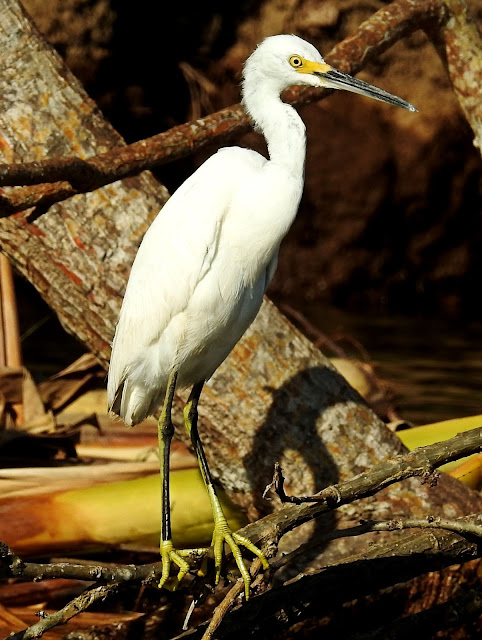The snowy egret, a small white heron, graces the wetlands with its pure white plumage, save for the striking yellow lores that sit between its long black bill and piercing eyes. Its legs are a dark black, contrasting with its bright yellow feet. During the breeding season, the bird boasts elegant, long, shaggy plumes, known as aigrettes, that adorn its nape and neck. The immature birds, while still white, have a less vibrant appearance with greenish legs.
When identifying the snowy egret, look for the following characteristics:
Body length: 22.1–26.0 inches (56–66 cm)
Weight: 13.1 ounces (370 g)
Wingspan: 39.4 inches (100 cm)
Adults are pure white with yellow lores, black legs, and yellow feet.
Immature birds have duller greenish legs.
During breeding, look for the distinctive long, shaggy plumes on the neck.
Habitat
The snowy egret is a versatile inhabitant of wetlands, including marshes, riverbanks, lakesides, pools, salt marshes, and estuaries. It is not typically found at high altitudes or directly on the coast.
This bird is native to the Americas, with a year-round presence in South America, the West Indies, Florida, and coastal regions of North and Central America. In the southern United States, it is migratory, breeding in various states. It has also been recorded as a vagrant in Europe, Iceland, Scotland, the Azores, and South Africa.
Snowy egrets are active foragers, often seen running or shuffling their feet in shallow water to flush out prey. They may sway their heads, flick their wings, or vibrate their bills to disturb prey. They are also known to hover, or "dip-fish," and sometimes forage in mixed species groups.
During the breeding season, snowy egrets form mixed colonies with other heron species. Males perform elaborate courtship displays to attract mates. They defend their nesting territory vigorously and participate in nest building with materials provided by the male. Clutches typically consist of up to six pale bluish-green eggs, with chicks hatching after about 24 days and leaving the nest after approximately 22 days.
The diet of the snowy egret includes fish, crustaceans, insects, small reptiles, snails, frogs, toads, and worms. They employ various hunting techniques, from active pursuit to ambush, and are known to forage in open fields alongside domestic animals.
Once hunted to dangerously low levels for their plumes, the snowy egret is now protected under the Migratory Bird Treaty Act in the United States. Populations have since rebounded, and the species is classified as "Least Concern" by the International Union for Conservation of Nature, with a stable and increasing population trend.







